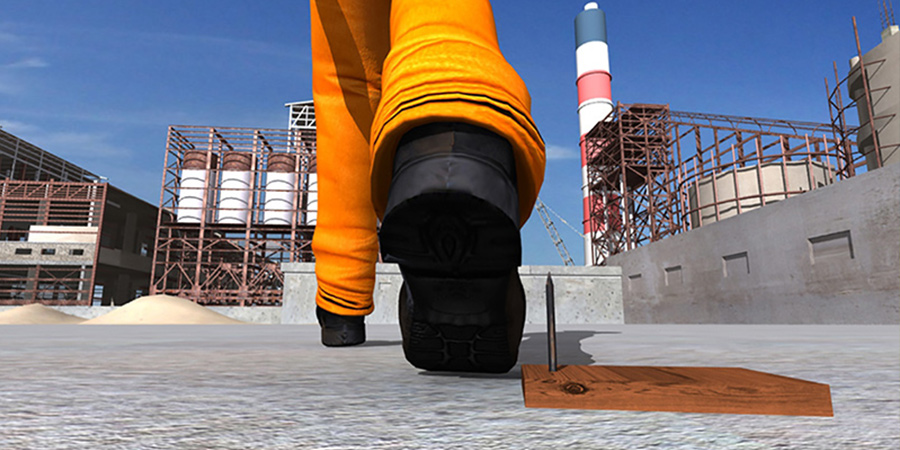Discipline is a double edge sword—necessary to enforce safety policies but also a potential chilling effect on the reporting of dangerous conditions. Near miss reporting is an excellent example of the negative impact discipline can play. Here’s the problem and a Best Practices solution for resolving it.
Why You Need Employees to Report Near Misses
In the course of conducting an injury investigation, nothing is more frustrating than to learn that the same circumstances that led to an injury resulted in prior incidents that went unreported by employees because accidents were narrowly missed and nobody got hurt. You hear: “That guard has been loose for two weeks;” or, “I slipped on that same spot yesterday;” or, “that’s been malfunctioning for 3 days.”
It just makes you want to scream. If only the people working in and around the area who knew of the danger had said something to you, action would have been taken and the injury could have been prevented!
Why Near Misses Go Unreported
One common reason employees are reluctant to come forward and report near misses is they fear discipline—against both themselves and their co-workers. Keeping the incident to themselves is thus a self-defense mechanism as well as a way for employees to protect colleagues and not be branded as a “snitch.”
Other reasons for failure to report near misses include:
- Employees don’t recognize the event (incident) as a near miss that needs to be reported. “I didn’t get hurt – so nothing actually happened,” the thinking goes.
- Reporting takes time – time that no one has. “I have to write a report for this?”
- Employees don’t know how to report near misses or who to report them to.
Overcoming Reluctance
Everyone – managers, supervisors, and especially the folks working on the floor – needs to be educated so that a red light goes off in their heads when they witness a near miss. They need to understand that the same conditions, unless addressed, are likely to result in future incidents and that the next time it might lead to actual amputations, broken bones, head injuries or even fatalities. And they need to understand that the situation might not be addressed, unless they report it.
Supervisors play a key role in education and awareness building efforts. They need to instill the urgency of reporting the near miss into everyone.
5 Ways to Get Employees to Report Near Misses
Here are 5 steps you can take to obtain this valuable information:
- Require that all incidents be reported immediately.
- Expand the definition of incident to include not only injuries and illnesses but also near misses and hazards.
- Educate employees about what constitutes a near miss and why they’re to be reported. Employees need to know that reporting a near miss is a Good Thing!
- Make it easy for employees to report a near miss.
- When an employee reports a near miss, thank them and use their input to remedy the situation.
Case Study: NOW Health Group
The above advice is based on the actual experiences NOW Health Group, Inc., in the NOW Foods, Inc. division. The company manufactures and distributes nutritional supplements and health foods worldwide. Its main manufacturing, distribution and corporate office location encompasses over 400 people. It also has smaller strategic distribution sites, as well as about a dozen retail locations.
As a growing company, NOW faced the challenges of moving from an entrepreneurial organization to a more mature business structure. It also has a very diverse workforce. The company has only one person whose full time job is devoted to safety and health; so it’s extremely important that everyone in the organization be actively involved in the safety process. In fact, NOW’s safety manager says that’s precisely what’s been happening.
Some Revealing Statistics
The safety looked at the company’s incident and injury related costs data over the past 6 years and found an interesting trend: The years with the greatest number of incidents reported were the same years the company spent the least amount of money on injury costs. Conversely, the years it had the fewest incidents reported were the same years it spent the most amount on injury costs.
The Realization: When the company got the incident information in a timely manner, it was able to act on it and prevent injuries. So, NOWdecided to put a lot of emphasis on reporting of incidents.
Education and Buy-In
The first step was to make a concerted effort to educate all facility employees on what constitutes an incident, and what constitutes a near miss. The NOW safety manager went from department to department providing training on incident reporting and the value of getting near misses reported in preventint injuries.
At first there was skepticism. Some people thought that to report a near miss would be seen as admitting a problem or failure in a process. To defuse this, the safety manager explained why the company was encouraging near miss reporting and how the information was going to be used. He assured employees that the reporting program would not be used to discipline those who submit reports.
He also educated people on the impact that reporting has on safety performance and shared reporting and injury cost data with everyone to show how more reporting translates to lower costs, which indicates fewer injuries.
Making Reporting Simple
NOW made it as easy as possible for employees to report a near miss. Methods include:
- Reporting a near miss to their supervisor; or
- Dropping a near miss report in a suggestion box.
NOW even placed additional suggestion boxes in different departments so that the boxes are more convenient for employees.
Another important step was allowing employees to report anonymously. Surprisingly, fewer than 5% of reports are anonymous. This willingness to list names is evidence of how well the non-reprisal message was received. Since the company doesn’t routinely “write people up” for reporting near misses, even if the person reporting was involved in the incident, people didn’t feel like they had to hide their identities.
A New Safety Metric
NOW also encouraged the reporting of near misses by tying-in the timely reporting of incidents to corporate safety goals. One of the main safety metrics it now uses is:
Total incurred injury costs / number of incidents reported
The company made it advantageous to report incidents by basing bonuses paid on meeting the corporate goals. The results? NOW had more near miss reports filed in the first 2 months of the year it began the program, more than in the entire previous year. Near miss events didn’t suddenly shoot up in that period; they were just reported more often.
Conclusion
Near misses are a source of valuable data. However you choose to do it – whether it’s through promotion, education, simplified reporting or revised safety metrics – you need to find a way to collect this data. Because when you get good information, you can act to prevent injuries.






